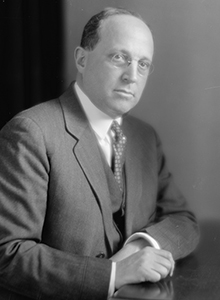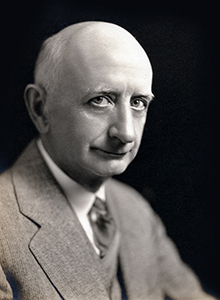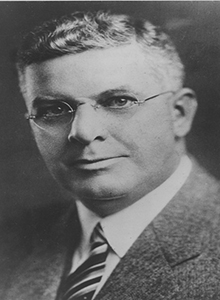
Eugene I. Meyer
- Governor [Chair], Board of Governors, 1930–1933
- Born: October 31, 1875
- Died: July 17, 1959
Eugene Isaac Meyer was chairman (called “governor” before 1935) of the Federal Reserve Board from September 16, 1930, to May 10, 1933.
Meyer was born in Los Angeles, California, in 1875. He received his bachelor’s degree and a doctorate in law from Yale University.
In 1901, Meyer formed the brokerage firm Eugene Meyer Jr. and Co. His firm became increasingly focused on investment banking, and Meyer also became interested in the railroad, oil, copper, and automotive industries.
Meyer first entered government service in 1917 when he assisted the Committee on Raw Materials with the acquisition of an abundance of copper for the armed forces. In 1918, President Wilson appointed Meyer the director of War Finance Corporation, where he served until 1920 when its activities were suspended. President Calvin Coolidge appointed him a member of the Federal Farm Loan Board in 1927. He resigned from this position in 1929 and was appointed to lead the Federal Reserve Board by President Hoover the following year.
As chairman, Meyer supported open market purchases and pushed for reform of the banking system, which involved a unified commercial banking system that only allowed for nationally chartered banks. He also favored government intervention, such as buying surplus cotton to help cotton prices.
After leaving the Federal Reserve Board, Meyer became the publisher of the Washington Post, serving in different positions for the newspaper company until his death in 1959.
Written by the Board of Governors of the Federal Reserve System. See disclaimer.




